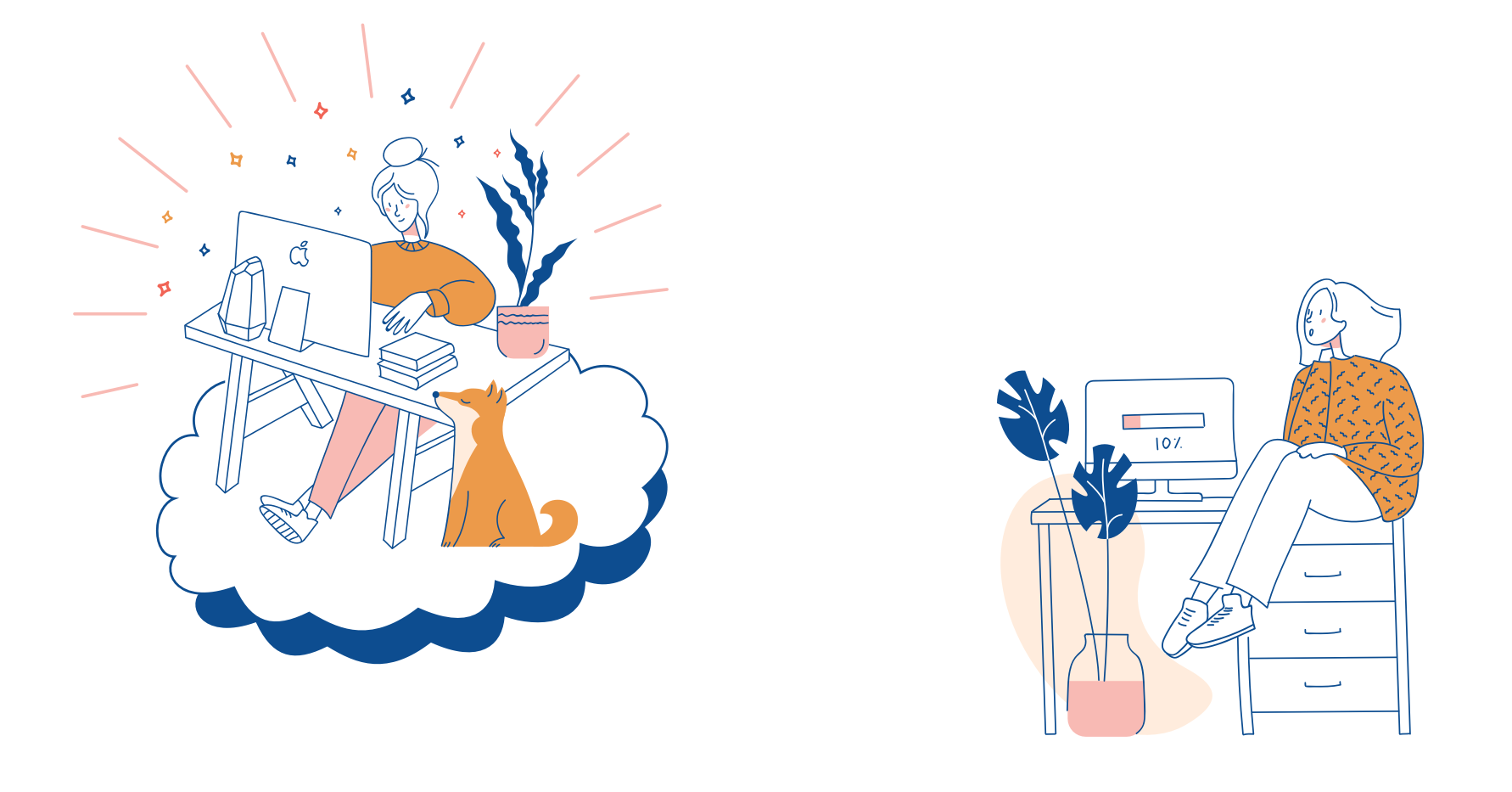An Interview with the Founder of Remake

Are you curious about why Remake was created, what its mission is, and why its founder spends nights and weekends working on it? Read on!
If you’re more interested in learning how to use the framework and what you can do with it, the Intro to Remake series is a better place to start.
Let’s jump right into the interview with David Miranda, the founder of Remake!
“How would you describe Remake to someone?”
That’s a difficult question. It depends on who they are.
If they’re a full-stack developer, I’d probably tell them to use another framework. They’re used to having a ton of flexibility and Remake isn’t good for that. Remake’s focus is on simplicity and speed to market.
If they’re a no-code enthusiast, I’d probably tell them to go with Bubble or Glide Apps to build their app. They’re used to interacting using visual builders to build things — and Remake won’t give them that. Instead, Remake lets you create that no-code experience for other people.
However, for better fits, I’d have a different answer 😁
- If they’re a front-end developer, I’d say: “I hate the backend too and that’s why I created Remake. Come join me in my mission to destroy backend programming.”
- If they’re an entrepreneur/indie hacker and love to launch new products all the time, I’d tell them: “Remake is the fastest way to build a web app that has a custom design and can serve as many customers as you want. Switch to us to launch your products even faster.”
- And, finally, if they’re a designer, I’d tell them: “Are you tired of arguing with developers about what’s possible to build or not? With Remake, you can just build it yourself. All you need to know is HTML and CSS and you can launch a working product!
“What’s your vision for how people should use Remake?”
My dream for Remake is that it will help more people launch successful startups.
The problem is, right now, there’s too many “right ways” to do web development — and they’re all hard. They suck away your time until you’re only spending 10% on your actual product.
I want Remake to be the framework that people reach for when they just want to build something.
It will never be able to do everything, but if it can help someone get an extra 3-4 ideas out into the world every year, I’d be happy.

“Is Remake mostly for prototyping?”
No.
Prototypes are meant to test the look and feel of an application without actually building one — but they don’t help you test the experience of actually using a full web app.
Remake lets you build a real web app that has real user accounts and a database — and the web apps you build with it actually work.
It lets you test full experiences.
Remake is meant to be replaced after a year or two, but only after you’ve gotten some traction with your product and figured out if it’s something people want.
“When would someone need to switch to a more mature framework?”
If you’re building a web app that lets people login and edit the contents of a website then Remake will be a perfect fit for a long time.
Remake will soon be adding first-class support for anonymous form submissions, filtering/searching data, and collaborating on editing web pages.
If these features are enough for you, you won’t need to switch away from Remake ever.
However, if you need advanced social features or real-time updates across users, you’ll probably need to switch to another framework (or build it yourself by customizing Remake’s backend).
However, it won’t be hard to switch, even if you need to. Remake is 90% just the normal HTML and CSS you’d have to write anyway, no matter which framework you’re using, so removing it and switching to something else is as simple as removing a few custom attributes from your HTML.
“What inspired you to create Remake?”
“If I can build a website, I should be able to build a web app.”
This thought keeps me up at night.
I think it’s absurd that web technology has gotten so complex that it’s virtually impossible for a beginner to build a working web app in under a year.
Over and over again, I’ve come up with a design, coded it in HTML and CSS, and felt like I was 99% done even though I was only really 30% done.
It was disheartening to have to go through the painstaking process of building a backend over and over again — when I knew that I was reinventing the wheel every time.
I just kept thinking: “building a backend should be a solved problem by now.”
And that’s why I made Remake: I wanted people to be able to build things just for fun, working just on the front-end and focusing just on the interface people will see, but also to be able to release a fully working product.
“Why did you create a new framework when there are already so many?”
Remake is a Meta CMS. There’s no other good way to explain it.
With a normal CMS like Wordpress or Webflow, you can deploy a single editable website for a single client. In order to serve multiple clients, you’ll have to deploy another copy of the CMS.
A Meta CMS, on the other hand, lets you serve multiple customers with a single template. You build it once, but an infinite number of customers can login and edit their own copy of it.
I searched for months looking for a Meta CMS, but came up with nothing.
The business model made sense to me though:
- A developer creates the front end
- The Meta CMS handles the backend and user accounts
- The developer gets to run a full business with multiple customers instead of just one
- The Meta CMS helps the customer scale their business instead of just helping them serve one customer at a time
No one was doing this. I found it weird that there was this gap in the market.
So, I decided to build my own Meta CMS. Not on purpose, at first... I was just experimenting. I started out by just brainstorming some of the simplest ways to achieve this.
My first idea for Remake was:
- Let users edit HTML on the front-end
- Save the entire HTML page to the backend (to the current user’s account)
I still think this is a genius idea 😁
Since most JS plugins just let you modify front-end HTML, why not just save the resulting HTML to the current user’s account in a database and call it a day? That’s basically a web app — an editable website. (You could even do some funky things with using CSS selectors in place of SQL statements to sync data between pages, but that’s another story).
However, I soon switched over to the current model of Remake (tagging elements with labels and converting HTML into JSON), which made it a lot easier to save data, label it, and share it across pages.
At the time, I thought I was just building a small tool for RequestCreative, but the technology turned out to be so fun and fast to work with that I wanted to bring it to a wider audience.
I started live streaming the development of a frontend framework called Remake.js in 2019, which eventually developed into the full stack framework that Remake is today.
“Are there any misconceptions about Remake you’d like to correct?”
- Remake isn’t a no-code tool. It lets you build no-code tools for other people.
- Remake isn’t a front-end framework. It’s a full-stack framework that comes with user accounts and a database — and it’s actually server-rendered.
- Remake isn’t a CMS. It lets you add CMS-like capabilities to a static HTML/CSS template — and distribute an editable website to an infinite number of customers, not just one.
“What do you envision this framework becoming?”
Making a web app should be as simple as publishing a blog post.
My dream would be that Remake would be part of the browser. There would be a “New Web App” button right under the “New Tab” button in the browser’s main menu.
This would make it easy for beginners to get started with web development.
As a kid, you could start playing around with making a web app and have something figured out in maybe a few hours. Within a day or two of experimenting as a total beginner, you could have a working web app that you made yourself.
You could share it with friends and see what they think of it. Before long, you might have taught your cousin how to make web apps too. And you could build one for your uncle, aunt, or mother.
The ability to make a website is one thing, but the power to build something interactive that other people can contribute to (a web app) is an entirely different experience. It’s magical to see someone use something you made and get value from using it. I want to bring that experience to as many people as I can.
